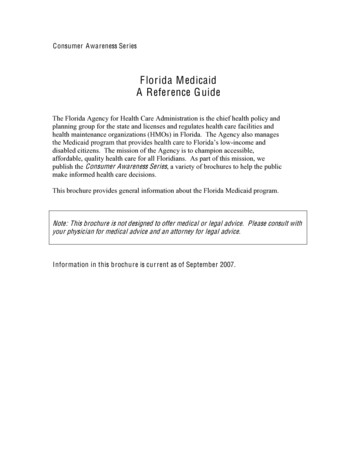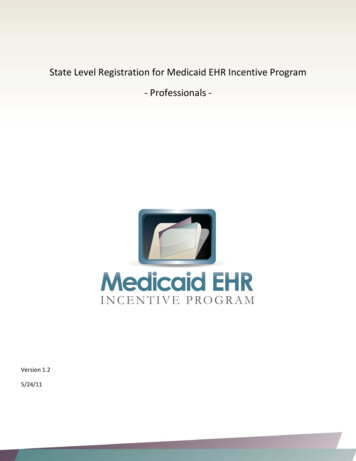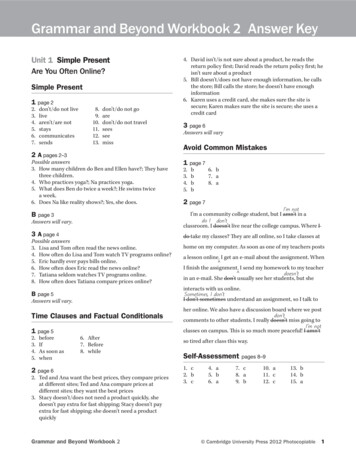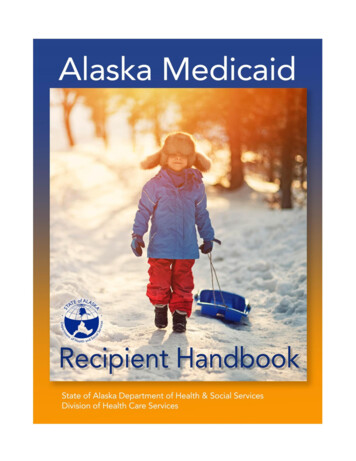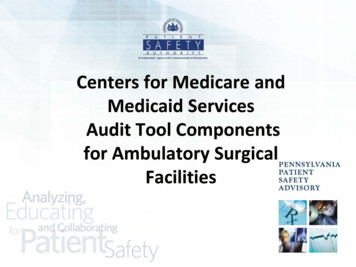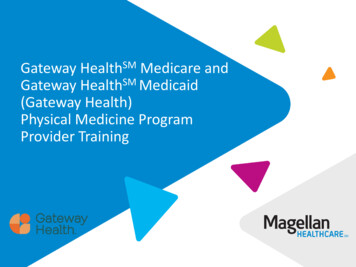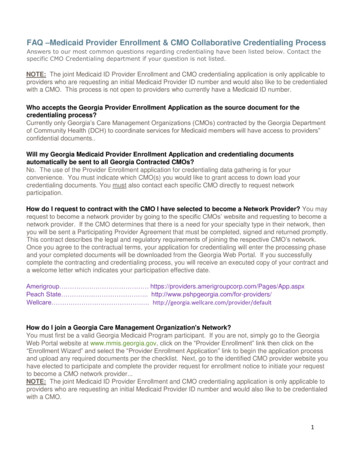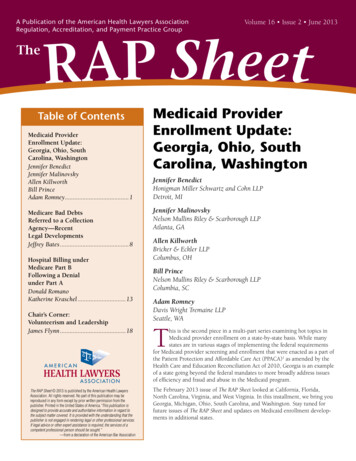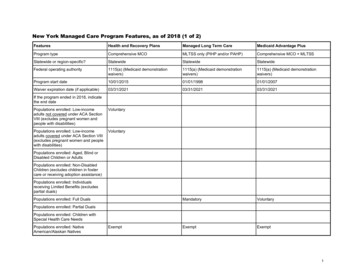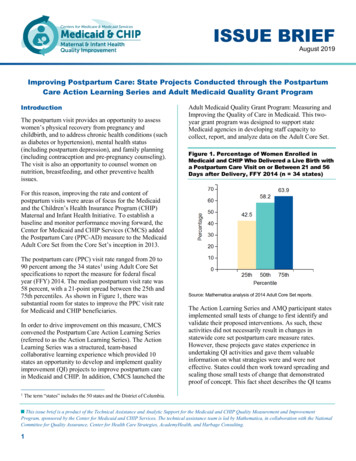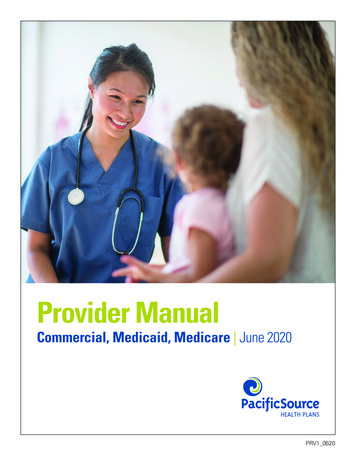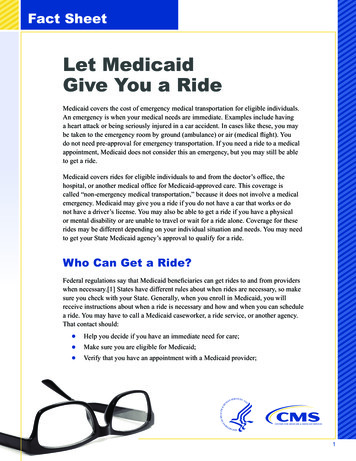
Transcription
Fact SheetLet MedicaidGive You a RideMedicaid covers the cost of emergency medical transportation for eligible individuals.An emergency is when your medical needs are immediate. Examples include havinga heart attack or being seriously injured in a car accident. In cases like these, you maybe taken to the emergency room by ground (ambulance) or air (medical flight). Youdo not need pre-approval for emergency transportation. If you need a ride to a medicalappointment, Medicaid does not consider this an emergency, but you may still be ableto get a ride.Medicaid covers rides for eligible individuals to and from the doctor’s office, thehospital, or another medical office for Medicaid-approved care. This coverage iscalled “non-emergency medical transportation,” because it does not involve a medicalemergency. Medicaid may give you a ride if you do not have a car that works or donot have a driver’s license. You may also be able to get a ride if you have a physicalor mental disability or are unable to travel or wait for a ride alone. Coverage for theserides may be different depending on your individual situation and needs. You may needto get your State Medicaid agency’s approval to qualify for a ride.Who Can Get a Ride?Federal regulations say that Medicaid beneficiaries can get rides to and from providerswhen necessary.[1] States have different rules about when rides are necessary, so makesure you check with your State. Generally, when you enroll in Medicaid, you willreceive instructions about when a ride is necessary and how and when you can schedulea ride. You may have to call a Medicaid caseworker, a ride service, or another agency.That contact should: Help you decide if you have an immediate need for care;Make sure you are eligible for Medicaid;Verify that you have an appointment with a Medicaid provider;1
Make sure that you have no other reasonable way to make it to yourappointment; andDecide what type of ride Medicaid can give you for your situation.Based on this information, your contact will either set up the ride you need or willtell you how to set up the ride yourself. A person or ride service approved by the StateMedicaid program will take you to and from your appointment.[2]Generally, if you are enrolled in a Medicaid managed care plan, the customer servicestaff can give you facts about ride benefits.How Do I Get a Ride?Depending on your needs and your State’s rules, rides might be by taxi, car, van, publicbus, or a subway. You might share your ride with others. You have to call to set up yourride in advance, and you should call if you need to cancel. Remember, the driver cangive you or an eligible family member a ride only to a medical office and back home.If the driver gives you a ride anywhere else, you and the driver could be charged withstealing from Medicaid.Make sure to follow the rules so Medicaid will approve and pay for your ride. Driversmay be authorized only for specific times to pick up the rider. It is important to: Be ready on time for the pickup; andCall the ride service to cancel a scheduled ride if you do not need theride anymore.In some places, Medicaid might not pay ride services for the time a driver waits foryou to arrive or if you do not show up for planned pickups. In other States, there maybe limits on how long the driver can wait for you if you are not on time. If you makea habit of not showing up for scheduled rides, you may have to make extra calls to theride service to verify that you intend to keep your appointment. Medicaid may alsoplace additional restrictions on your ability to get a ride, like requiring you to use onlyone service to get your rides.Let Medicaid Give You a Ride2
What If My Ride Does Not Show Up?What should you do if your ride does not show up? Call the number you used to setup your ride. Stay calm and explain the problem. The ride service should help you.Then call your medical provider, and explain it to them.What If My Appointment Is Changed?If your appointment is changed, call your ride service as soon as you can. Explain whyyou are changing your ride time and set up a new pickup time.What Happens If theRules Are Not Followed?If providers and beneficiaries do not follow the rules for Medicaid, the added cost tothe Medicaid program can be significant. Fraud and abuse can affect the amount ofmoney available for Medicaid benefits. Help prevent fraud by reporting an incident when: Your driver takes someone to a nonmedical location other than their home;Your driver takes a route that adds extra time or mileage;You get a ride in an ambulance when a wheelchair or regular van would haveworked; orYou see someone sharing his or her Medicaid card or number with others to getmedical services.These are just some examples of fraud. If you know of someone who is breaking therules, including a driver, report it.Fraud and Abuse:How Do I Report Them?You can report fraud anonymously, but it is helpful to give your phone number oremail address so an investigator can contact you for more information. If you do giveyour contact information, the investigators will protect your identity to the maximumextent provided by the law.Let Medicaid Give You a Ride3
Report fraud to your State Medicaid Fraud Control Unit or State Medicaid agency.Their contact information is available at fraud-prevention/fraudabuseforconsumers/report fraud and suspectedfraud.html on the Centers for Medicare & Medicaid Services (CMS) website, or contactthe U.S. Department of Health and Human Services, Office of Inspector General.Office of Inspector GeneralU.S. Department of Health and Human ServicesATTN: HotlineP.O. Box 23489Washington, DC 20026Phone: 1-800-HHS-TIPS (1-800-447-8477)TTY: 1-800-377-4950Fax: 1-800-223-8164Email: HHSTips@oig.hhs.govWebsite: https://forms.oig.hhs.gov/hotlineoperations/To see the electronic version of this fact sheet and the other products included inthe “Non-Emergency Medical Transportation” Toolkit, visit the Medicaid ProgramIntegrity Education page at ic-landing.html on the CMS website.Follow us on Twitter#MedicaidIntegrityReferences1 Assurance of Transportation, 42 C.F.R. § 431.53. Retrieved March 15, 2016, from http://www.ecfr.gov/cgi-bin/text-idx?c ecfr&SID cdb6a478293ced6a5371b84531517f63&rgn div8&view text&node 42:4.0.1.1.2.2.10.5&idno 422 Health Care Financing Administration. National Association of Medicaid Directors’ Non-EmergencyTransportation Technical Advisory Group. (1998, August). Designing and Operating Cost Effective MedicaidNon-Emergency Transportation Programs: A Guidebook for State Medicaid Agencies. Retrieved March 15, 2016,from pdfLet Medicaid Give You a Ride4
DisclaimerThis fact sheet was current at the time it was published or uploaded onto the web.Medicaid and Medicare policies change frequently so links to the source documentshave been provided within the document for your reference.This fact sheet was prepared as a service to the public and is not intended to grantrights or impose obligations. This fact sheet may contain references or links to statutes,regulations, or other policy materials. The information provided is only intended tobe a general summary. Use of this material is voluntary. Inclusion of a link does notconstitute CMS endorsement of the material. We encourage readers to review thespecific statutes, regulations, and other interpretive materials for a full and accuratestatement of their contents.April 2016Let Medicaid Give You a Ride5
Let Medicaid Give You a Ride 5 Disclaimer This fact sheet was current at the time it was published or uploaded onto the web. Medicaid and Medicare po
